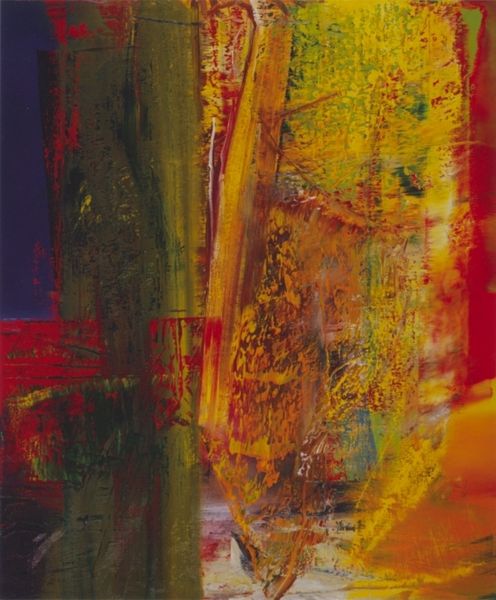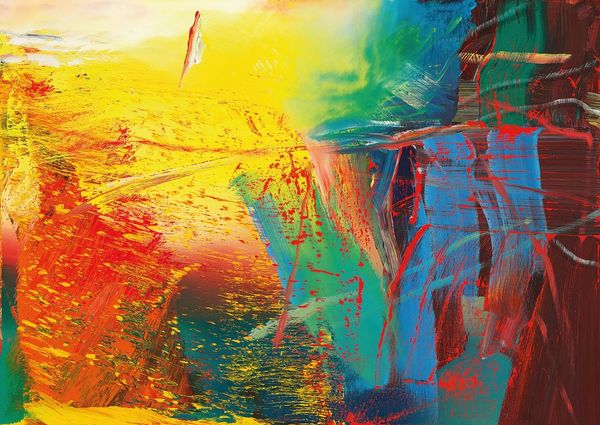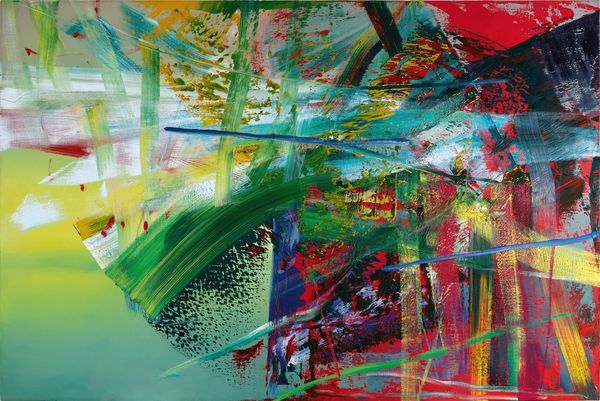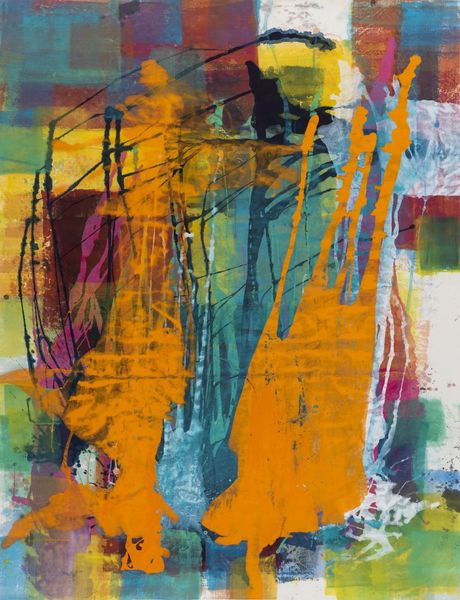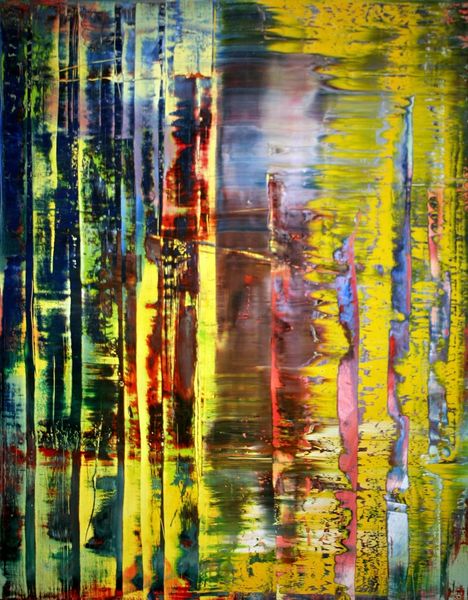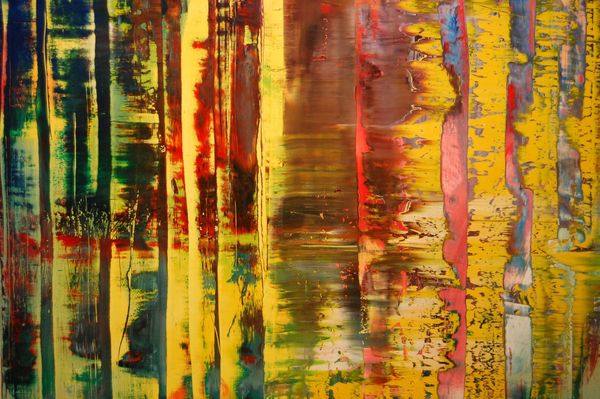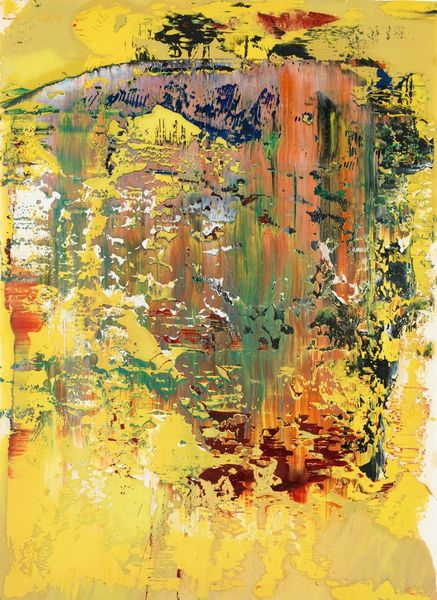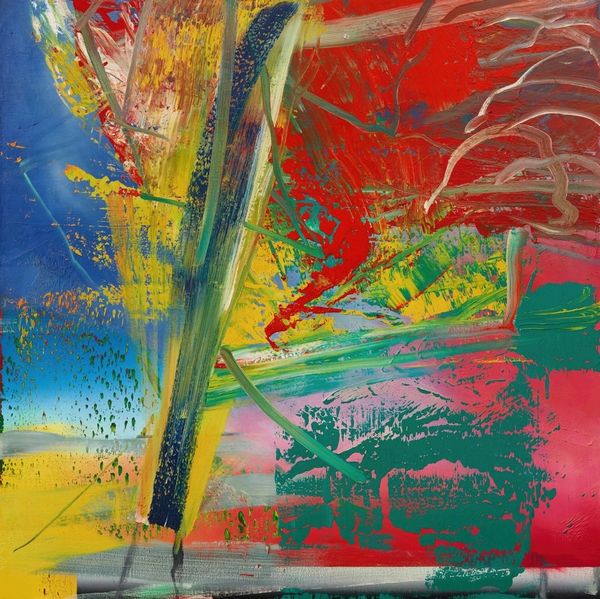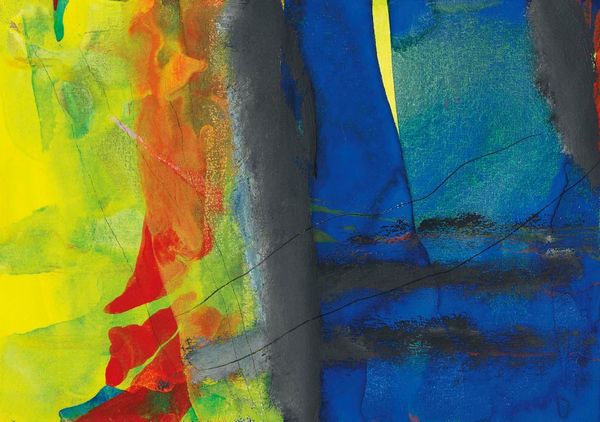
#
capitalist-realism
Copyright: 2019 Gerhard Richter - All Rights Reserved
Editor: This is Gerhard Richter's "Abstract Painting No. 599," created in 1986 using acrylic paint. There's a real sense of chaos to it, but also incredible depth. How do you interpret this work? Curator: For me, this painting isn't just about chaos, it’s a visual manifestation of post-war Germany grappling with its identity. Richter, having lived through both Nazi Germany and the GDR, explores fragmentation and the impossibility of a singular, coherent narrative. The blurring technique he often employs is, I think, key here: it’s a deliberate obscuring, almost a form of resistance to fixed meanings. What does it evoke for you in terms of its materiality? Editor: I see what you mean about fragmentation. The thick layers of paint and the way colors are scraped and dragged across the canvas makes me think about destruction and rebuilding. Is there any commentary on political conflict? Curator: Absolutely. Richter's generation was acutely aware of the failures of utopian ideologies. This abstraction can be seen as a rejection of grand narratives, mirroring the skepticism and uncertainty of the time. The gestures, those violent applications of paint, can also be interpreted as challenging traditional notions of artistic mastery and authorship. The 'failure' of clear representation becomes, ironically, a powerful statement. How do you feel the lack of explicit imagery impacts the viewer? Editor: I think it forces the viewer to confront their own feelings and experiences. It's less about what Richter intended and more about what the painting provokes in each of us. It allows room for dialogue instead of telling you what to think. Curator: Exactly! It opens a space for individual and collective reflection, questioning established power structures and dominant historical interpretations. Editor: So, beyond the purely aesthetic, this work becomes an important document of its time, prompting reflection and critical engagement. I hadn't considered the weight of its historical context so explicitly. Curator: Precisely, and hopefully opens up thinking around whose stories art typically serves to tell.
Comments
No comments
Be the first to comment and join the conversation on the ultimate creative platform.
